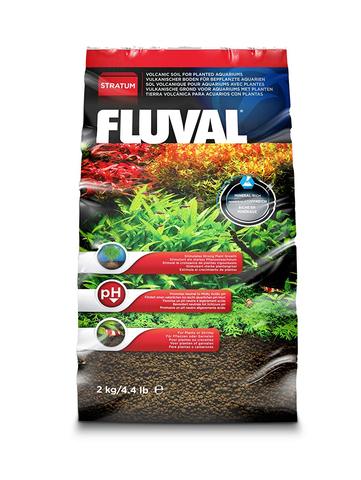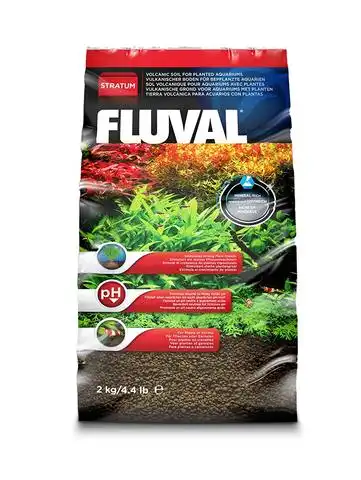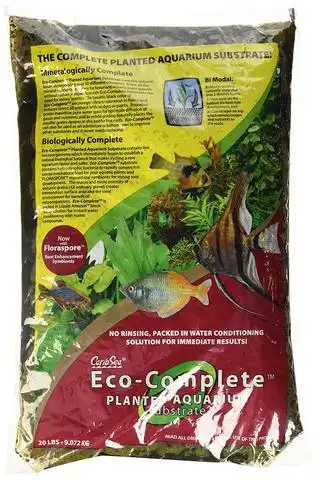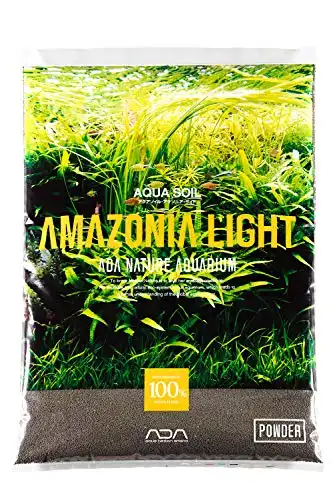Thank you for visiting! By the way… any links on this page that lead to products on Amazon and other stores/partners are affiliate links Aquarium Store Depot earns a commission if you make a purchase.
Are you struggling with finding an aquarium substrate for your planted tank?
In this blog, we share the best substrates for planted tanks, from intert substrates to professional aquasoils.
With over 25 years of experience in the aquarium hobby, I’ve assisted countless clients, hobbyists, and readers like you in building their dream aquascape. I’ve personally tested these products in real world scenarios to determine the best planted tank substrate on the market.
Top Picks
Let’s start with the top picks for those of you in a hurry. Of all the substrates reviewed, ADA is without a doubt the world leader when it comes to the best substrate available for planted aquarium owners. Fluval Stratum is a great alternative if you want cheaper and is more approachable for beginners. I feel that the Caribsea EcoComplete achieves the best combination of being beginner friendly and having a substrate that can absorb nutrients.
Our Candidates
Let’s talk about the list of products I looked at. Here is a list of the substrates I reviewed for this round up.
| Picture | Name | Features | Link |
|---|---|---|---|
Editor’s Choice  | ADA Aqua Soil Amazonia |
| Buy On Amazon |
Best Value  | Fluval Stratum |
| Buy On ChewyBuy On Amazon |
Budget Option  | CaribSea Eco Complete |
| Buy On ChewyBuy On Amazon |
 | Tropica Aquarium Soil |
| Click For Best PriceBuy On Amazon |
 | Mr. Aqua Aquarium Soil |
| Buy On Amazon |
 | ADA Aqua Soil Amazonia Light |
| Buy On Amazon |
 | Seachem Flourite |
| Buy On Amazon |
The Top 7 – Best Substrate For Planted Tanks
Let’s go over each substrate and see why each one made the list
1. ADA Aqua Soil Amazonia – The Most Famous Soil
The Best Planted Tank Substrate
The world's standard in active substrates for planted tanks. Created by brand that founded modern aquascaping
ADA Amazonia substrate mix that is known around the world by expert aquascapers. It lowers the hardness and pH levels to make the water mildy acidic, which is preferred by most tropical fish and plants. The substrate contains a rich amount of ammonia and phosphate.
The main issue with this substrate that it is very rich in nutrients and a newly planted aquarium will suffer from very high nutrients in during the establishment period. This will cause algae breaks and cloudy water and lots of water changes during the 8 week establishment period of the substrate. Some aquarists mitigate this issue by doing a planted tank dry start. Since the nutrients in this substrate is so high, it is easier to grow out new plants via the dry start method making this substrate a very popular one for this method.
This can frustrate some newcomers into the planted tank world. It also breaks down over time, requiring replenishment every 1-2 years as the substrate breaks down. This can be a major problem when it comes time to replace the soil if you aren’t careful as the substrate will leech out ammonia. It is really a substrate that is best in an experienced aquarists hands. ADA aqua soil is also an expensive substrate due to its high production quality and name brand.
Pros and Cons
- Very rich in nutrients
- Well known field results with the best aquascapers in the world
- Designed for expert level plants
- Will leech ammonia when first placed in the tank
- Expensive
- Takes about 8 weeks to establish
2. Fluval Stratum – Volcanic Soil for Aquariums
Best Value
A cheaper and beginner friendly alternative to ADA Soil. Also great for shrimp tanks!
Fluval Stratum is a specialty substrate that is designed for shrimp tanks. It made of Volcanic soil and is a porous material that establishes a ton of beneficial bacteria. It will also naturally lower pH making this ideal for most tropical fish and plants. It also tends not to discolor water when first placed into the tank.
One tip when placing in this substrate is to make sure the substrate is not under the rock or driftwood you are using. The substrate is easy to break under pressure and one it breaks, it loses its use in the tank.
The main downfalls I see with with this substrate is that it can be lightweight and easy to siphon out when cleaning the tank. It is significantly cheaper than ADA Aqua Soil and is effective for planted tanks. It is a great alternative and cheaper option. It is also more available in stores.
Pros and Cons
- Natural Volcanic based substrate
- Waters great with smaller tanks
- Soil has a high CEC value
- Lightweight – easy to siphon away substrate when cleaning
- Soil will break under light pressure
3. CaribSea Eco Complete – The Most Famous Aquarium Soil
Budget Option
A beginner friendly, inert substrate that is great for beginners starting their first planted tanks
Caribsea Eco Complete is a balanced substrate that is packed with liquid fertilizer. The soil holds the fertilizer within it for easy absorption. It has the added benefit of not decreasing pH or hardness in the long term. This gives you the advantage of having a substrate that is inert in nature, but also has the benefits of a commercial substrate. It comes in either a red or black color. It also has the added benefit of already having beneficial bacteria colony growing on it. This will reduce your cycle time when establishing a tank. The other added benefit is that it has a good amount of iron in it, making it better suited for red colored plants.
The main issue with Caribsea Eco Complete is that is it lightweight and may have issues anchoring larger plants. It’s shape is also not ideal for bottom dwellers. It is one of the cheapest and readily available planted tank substrates on the market. It makes an excellent budget option if your funds are limited.
Pros and Cons
- Contains beneficial bacteria
- Inert substrate
- No washing necessary
- Lightweight
- Substrate not the best for bottom dwellers
4. Tropica Aquarium Soil – Balanced Aquarium Soil from Europe
A top grade planted tank substrate from Europe. More natural looking than ADA Soil
Tropica Aquarium Soil is a substrate brand in Europe that is well known. It is similiar to ADA aquasoil, but will not leech as much ammonia as the standard ADA aquasoil. Its grain is not uniform as well, giving a more natural looking substrate. Like most of the substrates on this list, it will lower pH and hardness making it ideal for most tropical fish and plants.
Pros and Cons
- Leeches less ammonia then ADA soil
- More natural grain variety and shape
- Lowers pH and hardness
- Expensive
- Hard to find
5. Mr Aqua Aquarium Soil – ADA Amazonia Aquasoil on a Budget
An ADA soil clone that is more porous and better suited for shrimp tanks.
Mr Aqua Aquarium Soil is an aquarium substrate that is similar to ADA aquasoil, but less rich in ammonia. The porous granular structure of this substrate helps with water exchange. It will soften water and lower pH like most of the soils on this list.
I find this as a good cheaper alternative for those who want ADA quality soil, but not the ADA quality price. It can be tough to find locally though, but the link I have provided above makes it easier to purchase.
Pros and Cons
- Cheaper than ADA soil and more porous
- Lowers pH and softens water
- Less ammonia – easier to cycle time for establishment
- Harder to find in store
6. ADA Aqua Soil Amazonia Light – Beginner Friendly ADA Soil
An ADA substrate that is designed for beginners in mind. More forgiving for a beginner but still pro grade quality
ADA Amazonia Light is a more beginner friendly ADA soil. This substrate has a lower amount of nutrients. This means that there will be less of a establishment period and there will be less algae spikes when the plants are first getting established. This substrate lowers the hardness and pH levels to make the water mildy acidic, which is preferred by most tropical fish and plants. For those looking for ADA soils but don’t want as big of a disruptive 8 week cycle period, this is a better substrate to start with.
Pros and Cons
- Very rich in nutrients
- Well known field results with the best aquascapers in the world
- Less nutrients than standard ADA Amazonia product
- Expensive
- Takes about 8 weeks to establish
7. Seachem Florite – Reliable Clay Based Product
A insert clay based soil that does not break down in the aquarium. Readily available in stores
Seachem Flourite is a clay based substrate that you will not need to replace over time in your aquarium. It comes in several colors and grain types so you can find the substrate that works for you with this brand. Seachem Flourite is clay based, it will not alter your tank chemistry so you can use supplements to adjust your parameters as necessary.
Seachem Flourite is not nutrient loaded like say ADA or Mr. Aqua, but that also means that you will not experience the algae outbreaks that these substrates experience during the first couple of months. It is also not suited for bottom dwellers given it’s sharp structure. That can be a bit of downer if you are are into bottom dwelling fish like Corys. Seachem Flourite a great looking natural soil for people looking to do a natural looking planted aquarium with water column feeding plants.
Pros and Cons
- Several colors and types available
- Doesn’t break down because it’s clay based
- Readily available
- Messy to work with
- Not nutrient loaded
- Not suited for bottom dwellers
What Are?
We have to first start with this definition because we have to state the purpose of our substrate. Substrate is going to be gravel or some other specialty material that will be used to root plants in the aquarium. These plants will root in this substrate and use the nutrients in the substrate to grow and sustain themselves. It is also fair to point out though that most plants are water column feeders, which means they will derive nutrients from your water not your from the substrate. Several of the low light plants we mentioned in our prior post are column feeders.
However, some of the larger and more diverse plants in the industry are root feeders. these would include plants like Amazon Swords, Vallisneria, and Crypts. These also include the most highly sought after high end carpeting plants.
Why Do We Need It?
This is another good question because of plants do feed on the substrate, why do we need to go out of way to purchase a specialty plant substrate for them. Most of the planted substrate packages will tell you that it has nutrients that allow plants to grow, which is true.
However, let’s dive in deeper. the planted substrates will be rich in nutrients that will actually rot in your tank and release nutrients in your aquarium. Your plants will then consume it — if you select the correct plants. If you purchase a planted substrate, but you purchase plants that are water feeders like Java Fern what will happen is that your nutrient levels will spike and the other thing that is going to consume these high levels will be algae — lots of algae.
That’s why we need to be careful when we select what substrate to purchase and what plants will be placed in the aquarium. These substrates will be rich in nutrients early on when your plants are small which will allow them to grow and establish in your aquarium.
Most substrates will typically stay rich in nutrients for about 1-2 years. At this point, we will need to renew the substrate as the nutrient levels in the substrate will be begin to get exhausted. This will then require us to renew the soil will additional supplements such as Root Tabs so you can continue to re-materialize the substrate.
If you do decide to focus mainly on plants that are water column feeders, your options for substrates will open up. You can select just about any substrate you want that pleases your eye and be successful with column feeder plants like Anubias, Java Moss, and Java Fern.
Types

Let’s discuss the types of substrates now. There are several we have discussed here. They are:
Clay Based
Clay based substrates are our first set of inert substrates. Inert substrates will not alter the chemistry of your aquarium. These hard baked clay substrates will last forever and are the easiest planted aquarium substrates to manage. They will require fertilization if you plan to use root plants in your aquarium.
Sand
Sand is another inert substrate commonly used. The main issue with sand is if it is not course, there is a possibility that the sand will not be suitable for plants. Keep this in mind if you are considering this.
Gravel Based
Gravel based substrates that the standard substrates you will see at a fish store or chain pet store. They can come in a variety of colors and shapes and do not offer nutrients. They are typically best served for fish only or with planted tanks composing of water column feeding aquarium plants. Like clay based substrates, they will not alter water chemistry.
We have a video all about plants that do well in gravel if you want to check it out from our YouTube channel below:
Materialized Products
A good example of this is SeaChem’s Aquasolum. This is a materialized porous substrate. It tends to lower pH and soften water. It is ideal for keeping freshwater shrimp and root based planted tanks. Other types of these commercially available soils are Flourite and EcoComplete.
pH Boosting Products
These would include substrates like crushed coral. This is more suited for fish that require a high pH level like African Cichlids. These substrates increase your pH and maintains a stable level so you do not have to work with pH boosting supplements. These substrates do not make our list since they are not usually used in planted tank setups. Even if they are, the plants you will normally work with will be column feeding plants that fish in general won’t eat. This is because the fish we usually work with at higher pH for tropical fish are going to be Cichlids.
Important Factors In Choosing Soils
It’s really easy to get lost in the various types of aquarium substrates available and what they do (you can also see our video from our YouTube Channel for more info). It’s best for me to outline what the critical factors are when you select a substrate for your planted aquarium. They are the following:
Grain Size

Too think of a grain size and your root feeders will not be able to feed off the substrate. Too small and it will compact the substrate choking the roots out. Too fine of a substrate will also be stirred too easily by fish and inverts in your aquarium. For grain size you will want a range of 1-3 mm with 2mm generally being the sweet spot.
Material
As we discussed previously, material of the substrate matters. We generally want to avoid materials that increase hardness or pH. These would include substrates like coral sand or limestone chips. For ease, just follow the products we recommend in this post as it will eliminate the guesswork.
CEC Value
This is also known as cation exchange capacity. This reflects the substrates ability to bind aquarium plant fertilizer and other elements in it. Generally the higher the better as substrates with higher CEC values will hold nutrients better in the substrate for plants to utilize.
Weight
Some plants have delicate or small roots. A heavy or large substrate may cause difficulties when handling these. It’s sometime to consider depending on your overall plant selection.
Going the DIY Route
There is another popular route for aquarists to go to when it comes to a planted aquarium. This would involve using garden/top soil as a base and then “capping” the soil with coarse sand or one of the products listed above in our list to save on money. This is a viable option that can lead to lots of success, but it is really a mention best suited for someone who has experience with planted tanks.
For one, it can be difficult to find the correct soil for your planted tank because many of these soils are not studied or observed for aquarium usage. This means you may not know how your parameters shift when you place this soil in the tank. They will also leech ammonia like crazy so you may have an extended cycle and they will break down the fastest of all substrates. I feel that it is something that should be attempted by an experienced hobbyist and generally out of the scope of this post.
Frequently Asked Questions
I get a number of questions from readers about planted aquarium setups. Below are several frequent ones I get. If you have others you would like to get answered, please leave a comment below and I will added to this post.
How Deep Should My Aquarium Soil Be?
Many of us who are doing a planted aquarium aquascape style like an Iwagumi Aquascape are going to use a sloped substrate setup. When this is done, the usual recommended substrate depth is 3 inches in the front and 5 inches in the back. I feel it’s fine to go 2 inches in the front and 4 inches in the back. Unless you have large rooted planted like Swords, you shouldn’t have to go more than 4 inches in depth.
If you are working with column feeder aquarium plants, substrate depth is less of an issue. You can consider going with a low depth. You can use an inactive aquarium substrate that barely cover the bottom of your aquarium. This will provide an easier to clean and easier to manage substrate. It will also save you some money as well.
Closing Thoughts
There are a variety of substrates available on the market and it can make the a bit mind racking to determine what is best. The best place to start is to see what types of plants and setups you want and then journey to your substrate from there. If you are going with mostly column feeding plants, you can go with an insert substrate and have great success.
If you are are planning to go with mostly root feeders, you will want to have a soil based substrate like an ADA or Mr. Aqua and need to work with the cycle period or consider dry starting the aquarium. If you have any questions, please feel free to leave a comment below. Thanks for reading.
- About the Author
- Latest Posts
I’m thrilled that you found Aquarium Store Depot! Here you’ll find information on fish, aquariums, and all things aquatics related. I’m a hobbyist (being doing this since I was 11) and here to help other hobbyists thrive with their aquariums! I adhere to a high quality Editorial Process and Review products with real life field usage and practical analysis.













Hi Mark, thanks for the super informative article, so helpful! I was wondering if for some of the substrates you mentioned (aside Fluval, as you mentioned it would break under pressure), if one wanted to use some of these substrates that you marked as not ideal for bottom dwellers, could you cap the substrate with gravel or sand to make it suitable for the bottom dwellers while still getting the benefits for the plants?
Hello Marlene,
Yes, you can cap these substrates. I didn’t go into it in this article since it is a more advanced topic and it can be hard to manage for new aquarists. You should use an active substrate if you are going to cap. I know DIYers use a variety of garden soil to save on costs, but I don’t really spend my time on that realm since garden soil can be random if you don’t know what they have. Many mask their ingredients with branding. The few I know who have use a multilayer layer soil use organic garden soil. Just do your research.
I stick with active soils that are designed for planted tanks. More expensive, yes. Just peace of mind for me. Check this link from GreenMachineonline – they talk about using Tropica soil to cap. They used to professionally aquascape large tanks for years – so I see them as a trusted source for information — https://www.thegreenmachineonline.com/blog/aquarium-substrates-explained/